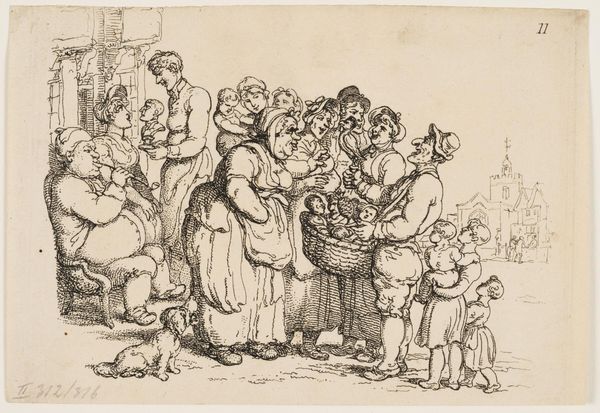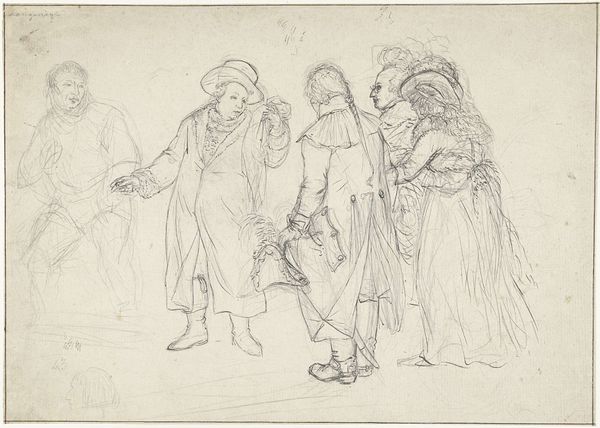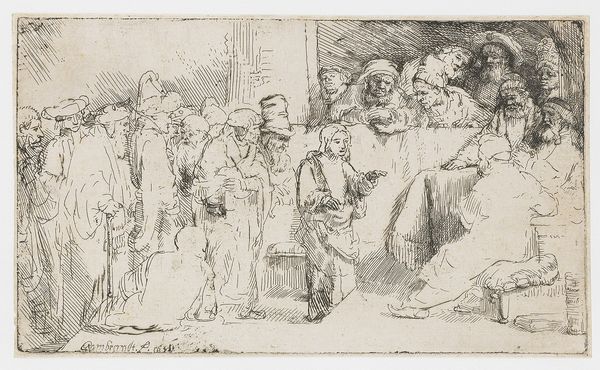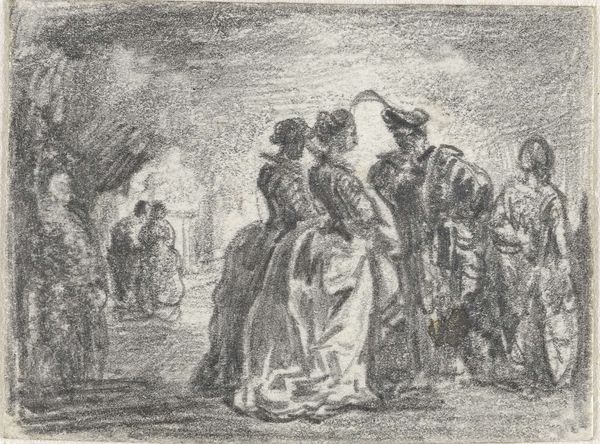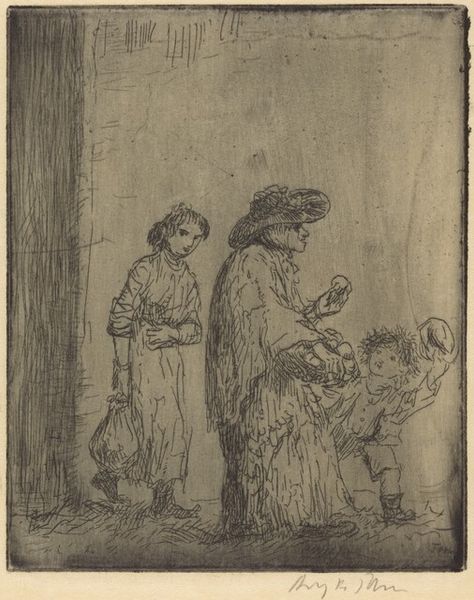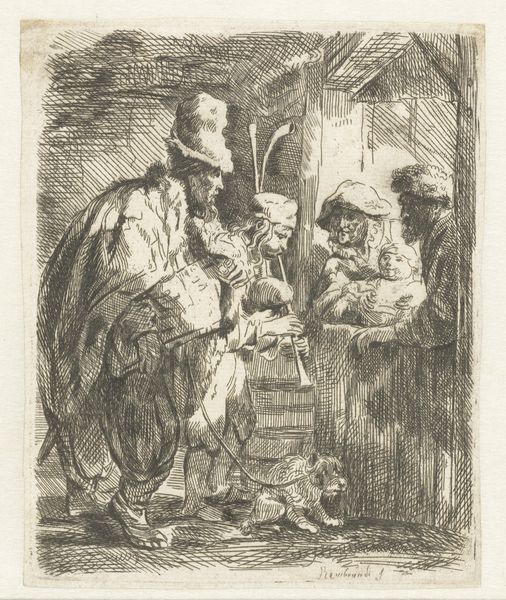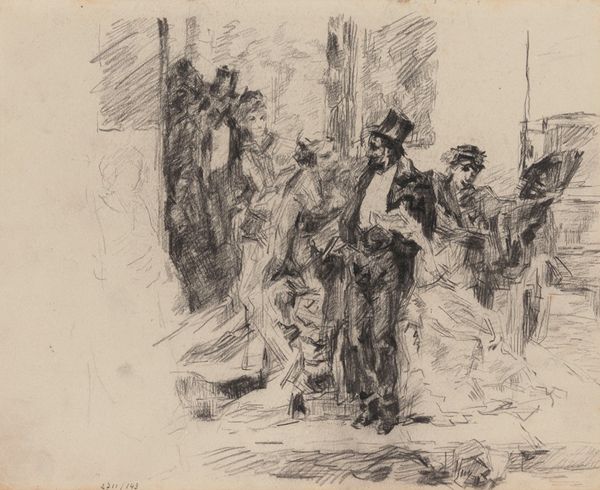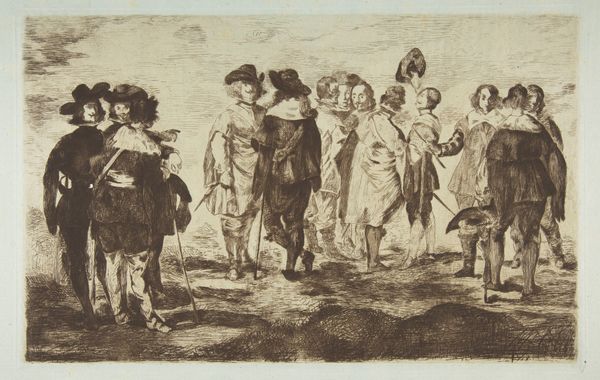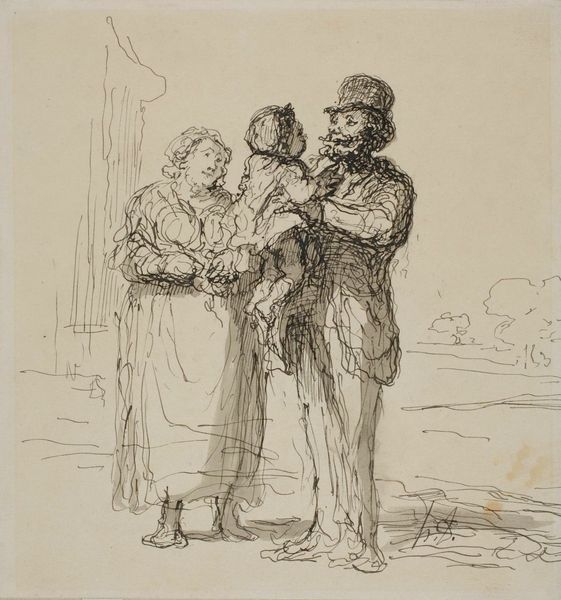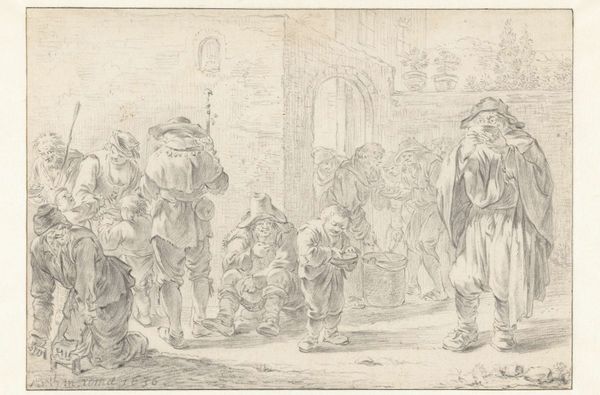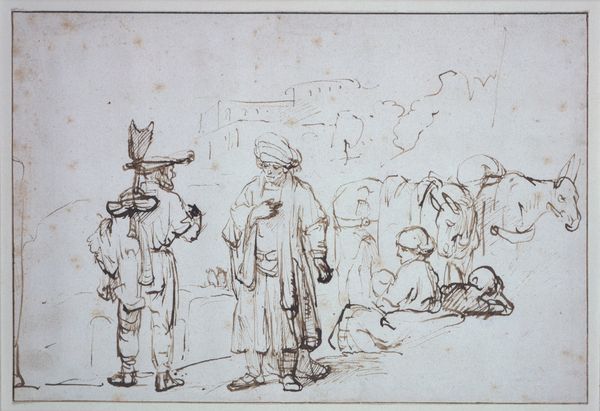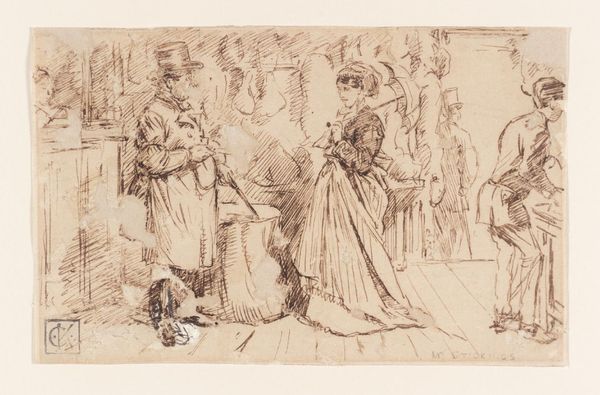
Thuiskomst van een oude soldaat, na de slag bij Waterloo 1843
0:00
0:00
drawing, paper, pencil
#
portrait
#
drawing
#
narrative-art
#
pencil sketch
#
landscape
#
figuration
#
paper
#
romanticism
#
pencil
#
genre-painting
Dimensions: height 243 mm, width 337 mm
Copyright: Rijks Museum: Open Domain
Editor: Eugène François de Block’s drawing, “Return of an Old Soldier after the Battle of Waterloo,” made in 1843 with pencil on paper, it’s currently at the Rijksmuseum. It strikes me as quite somber, even bleak. What do you see in this piece, especially considering its historical context? Curator: The method is everything here. Note the hasty, repetitive strokes of the pencil; they aren't just descriptive, but evocative. Look closely at how the paper itself – a relatively cheap, mass-produced commodity even then – becomes activated by the graphite. This artwork serves less as a window onto the *actual* return, but on a material rendering of nineteenth-century trauma, a kind of visual record of industrialised warfare’s effects on a civilian population. Editor: So you're saying the artist's choice of humble materials and rough technique adds another layer to understanding the impact of war? Curator: Precisely. Pencil sketches, especially in the Romantic era, were often preliminary works, steps *towards* a "finished" painting. But here, that perceived lack of finish becomes the point. The accessibility and reproducibility of pencil drawings – as opposed to, say, oil paintings – would have expanded the image’s circulation, influencing public discourse around Waterloo and its aftermath. Think about how the Industrial Revolution impacted the availability of these materials... Editor: That makes a lot of sense. I was so focused on the *scene* itself that I overlooked the implications of using something as common as pencil on paper to depict such a historically significant event. It reframes the artwork's intention. Curator: Exactly! De Block isn’t just presenting history, but *processing* it. The very materiality of this drawing speaks to a wider social and economic reality that frames even grand narratives like Waterloo. Editor: It’s fascinating how analyzing the physical components opens up new avenues of interpretation. Thanks for your insights! Curator: My pleasure. It is vital to always question the relationship between process, intention, and final form.
Comments
No comments
Be the first to comment and join the conversation on the ultimate creative platform.
